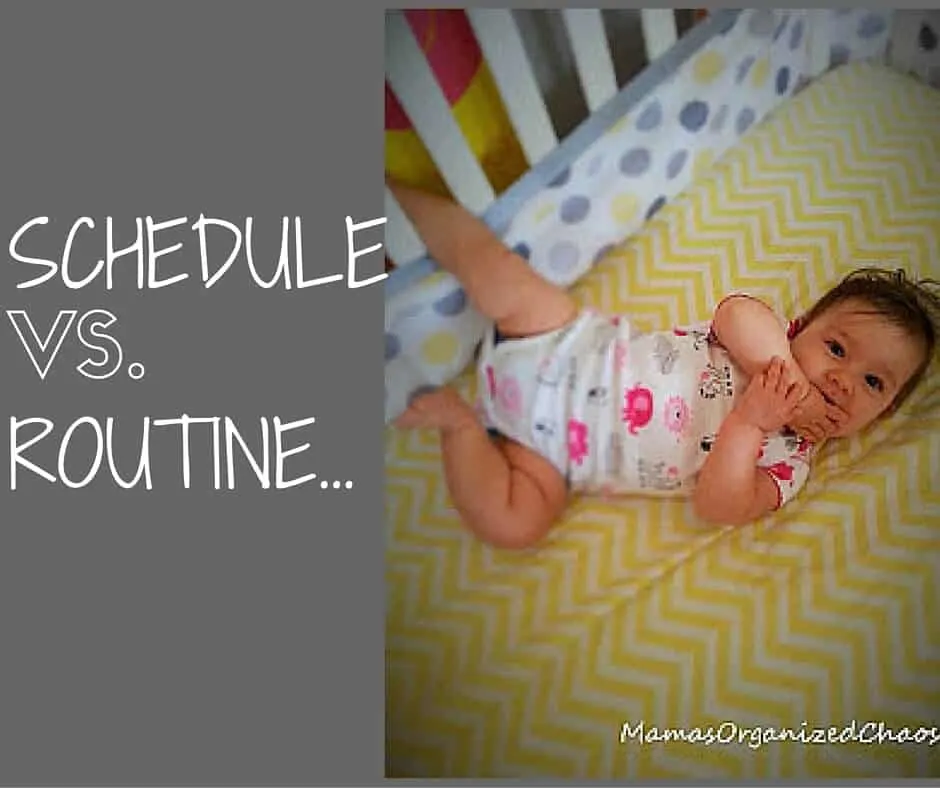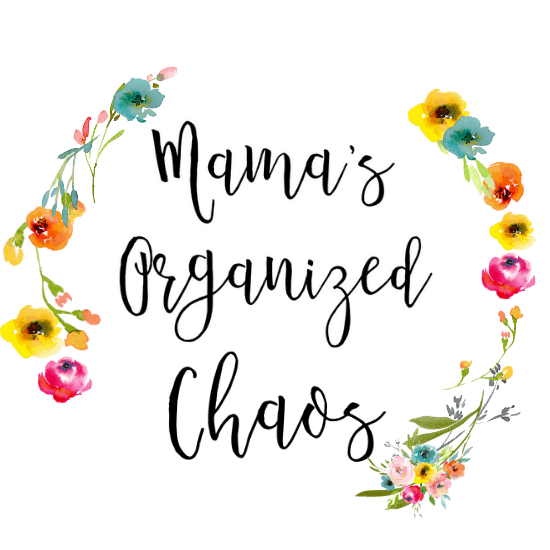
Schedules and routines are VERY different and very important- each in its own way.
For a complete list of sample schedules by month, please visit the baby schedules page. Each page also talks about specific struggles you may encounter during that particular month.
When you are just starting to establish schedules and routines with your baby, it is important to remember that in the first couple of months, you are more focused on routines. You should have a schedule in mind, but it is simply a goal during the first 2 months. You and your baby are working to figure out the perfect schedule together, and your baby is going through a lot of changes- including growth spurts at 3, 6, & 9 weeks- which means he might be extra hungry and the schedule may need to change during those weeks.
SCHEDULES
A schedule refers to the timing of your day: when you feed your baby, when your baby naps, when your baby goes to bed, etc. It is all about WHEN.
- The set schedule: Baby wakes up for the day, eats, naps, and sleeps at the same time every day (give or take 30 minutes).
- These are the types of schedules I have followed and recommend. Take a look at the baby schedules page for some examples. They involve waking your baby at the same time every morning, feeding your baby at the same time each day, and waking your baby from naps in order to keep the schedule on track. I flex my schedules by 30 minutes (no more), if I feel that my daughter needs more sleep. If she is sick, I am not focused on the schedule, but ironically, she seems to still keep the same schedule for the most part.
- The flexible schedule: Baby wakes on her own and is fed and takes naps at the same intervals throughout each day.
- Example: Your baby might eat every 3 hours. If she wakes up and eats at 8 am, she’d eat again at 11 am. If the next day your baby wakes up at 7 am, she’d eat again at 10 am. The same would ring true for naps throughout the day. You might be putting your baby down for naps after 1.5 hours of wake time, etc.
- Personally, I do not recommend this as it would impact the baby’s bedtime, which is a critical time of the day and babies can get extra fussy if they are kept up too late into the evening. I also like the predictability of being able to plan my day tomorrow and the next day. I can set up a playdate or an appointment, because I know exactly when my baby will be napping, sleeping, and awake.
ROUTINES
A routine refers to how you do things: how you put your baby to sleep for bedtime , how you put them down for naps, etc. It is all about HOW. Routines help your baby to know what is expected of them at that time. Our babies may not always understand our language, but they do understand the cues that we give them, and routines can be extremely helpful in getting your point across to your baby.
- Bedtime routines– This is the single most important routine you will create. You are trying to tell your baby it is bedtime. You are trying to explain to him that this is different than a nap, and that it is now nighttime where the expectation is to be sleeping. Your baby will learn your routine and start to know what it means. It will help him go to sleep faster because he knows what the routine is leading up to.
- We decided on a short, simple bedtime routine. When it’s bedtime, we want to be able to put our baby down quickly. Notice we do not bathe as a part of bedtime.Our bedtime routine is as follows:
- Feed
- Change into nighttime diaper and clothes
- Read a story
- Turn the lights out
- Close the curtains
- Turn the sound machine on
- Put into sleep sack
- Hugs and kisses (cuddle time if she doesn’t quite look tired yet)
- Lay down in crib
- We decided on a short, simple bedtime routine. When it’s bedtime, we want to be able to put our baby down quickly. Notice we do not bathe as a part of bedtime.Our bedtime routine is as follows:
- Nap time routines- These should be a shortened version of your bedtime routine. Again, he will learn what you are trying to tell him by the cues, and it will mentally prepare him for sleeping during nap time.
- My daughter knew this routine so well (by 4.5 months, she would yawn and start to rub her eyes in the middle of the routine and snuggle into me)Our nap time routine is as follows:
- Turn the lights out
- Close the curtains
- Turn the sound machine on
- Hugs and kisses
- My daughter knew this routine so well (by 4.5 months, she would yawn and start to rub her eyes in the middle of the routine and snuggle into me)Our nap time routine is as follows:
Notice that our routines are nothing fancy. They are short and sweet. A routine does not have to be lengthy to be effective.
- Eat, wake, sleep routines– This is the basic routine of the entire day. Your baby learns that she eats, then gets some playtime, then sleeps. She will learn what is next on the agenda and be more inclined to participate. This routine will enable your baby to fall asleep without needing to be fed. This is a key step in making sure your baby learns to self soothe and put herself to sleep.
Schedules and routines are extremely effective when used together. The schedule will allow you to be attempting naps and bedtime when your baby is just tired enough, but not too tired. When you have a good schedule, your baby will go down for naps and bedtime easily. The routines will simply provide a heads up to your baby as to what time it is and what is expected. Schedules and routines provide predictability, which provides comfort to your baby, ad makes mama happy, too!
